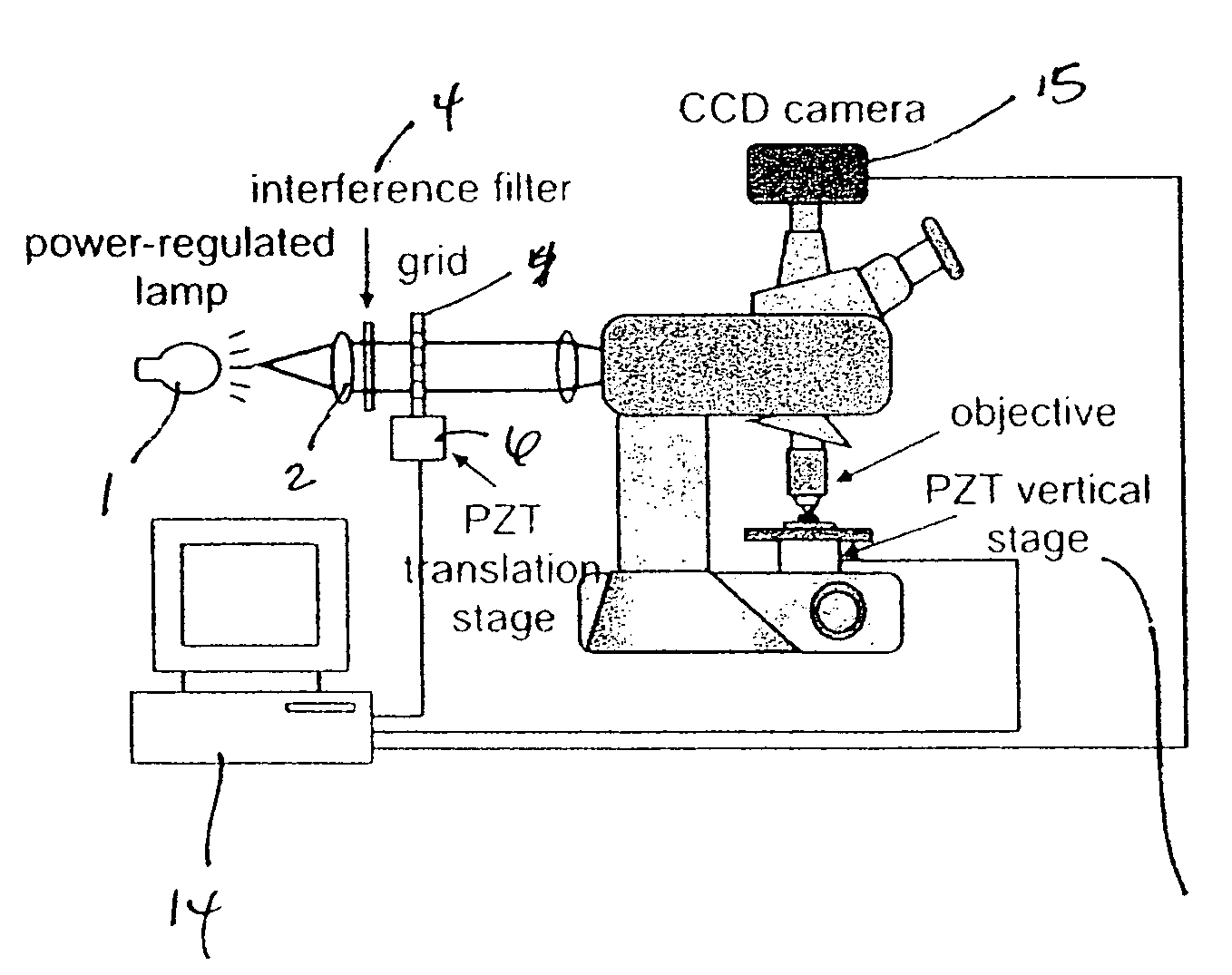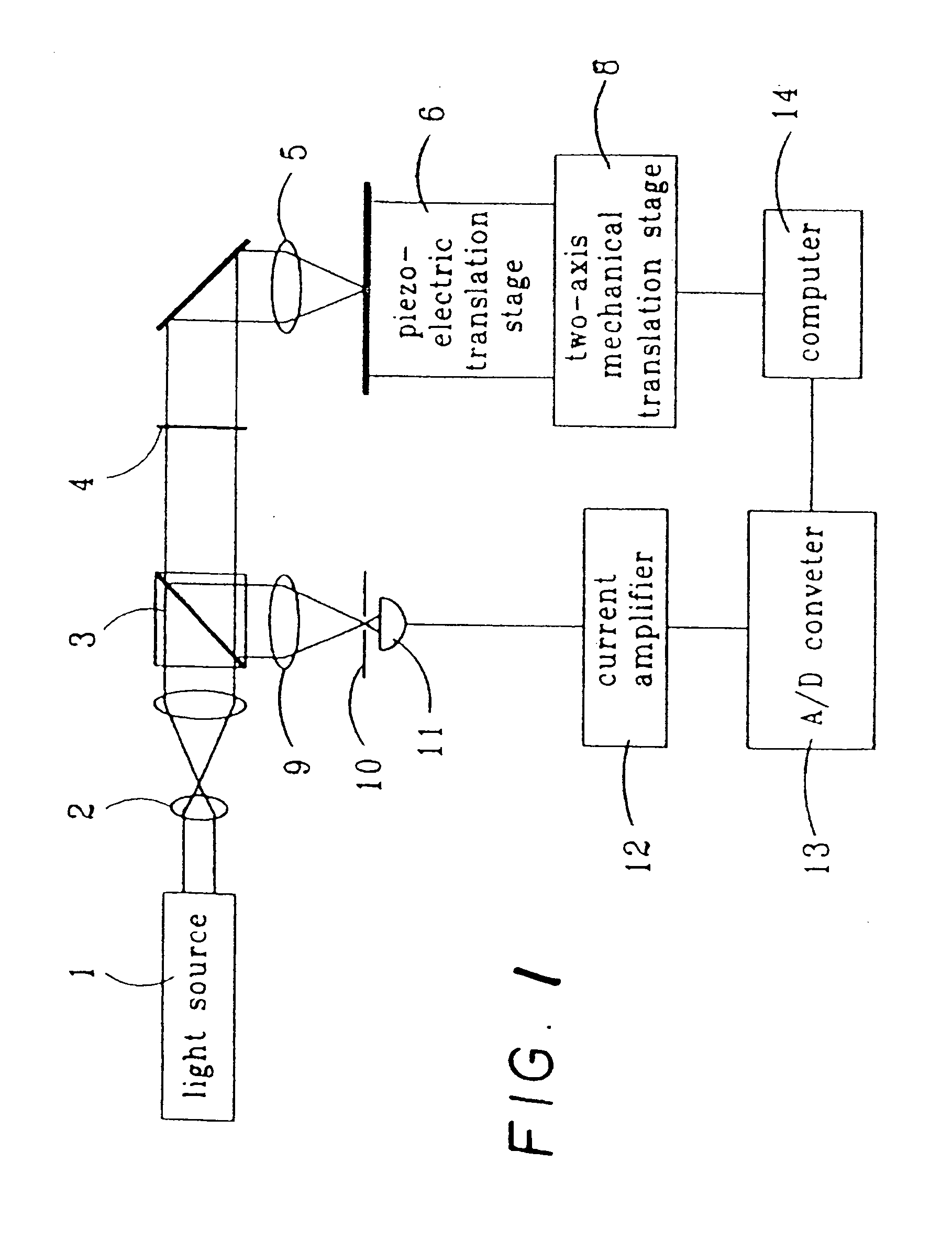Method for characterizing transparent thin-films using differential optical sectioning interference microscopy
a technology of differential optical sectioning and interference microscopy, which is applied in the field of transparent thin films, can solve the problems that the simultaneous measurement of n and d of inhomogeneous thin films cannot be achieved, and achieve the effect of simple setup, easy construction and calibration
- Summary
- Abstract
- Description
- Claims
- Application Information
AI Technical Summary
Benefits of technology
Problems solved by technology
Method used
Image
Examples
Embodiment Construction
[0021]FIG. 1 is an illustration of an exemplary “differential confocal microscopy”. Such a system is described in detail in U.S. Pat. No. 5,804,813, the contents of which are incorporated herein in its entirety. With reference to FIG. 1, light source 1 emits a beam through a beam expander 2, and the beam is then focused by the focusing device 5 onto a sample which is at the top of a piezo-electric translator (PZT) 6. The sample is put on the PZT 6, and the PZT 6 is set up on computer-controlled two-axis mechanical translation stages 8. Before performing measurements, the distance between the sample is adjusted, and the focusing device 5 is adjusted to the focal length of the focusing device by maximizing the detected signal, and the PZT 6 is adjusted to move the sample to the linear slope region of the axial response curve of confocal microscopy, which is the working range of the present “differential confocal microscopy” of the present invention.
[0022]The two-axis mechanical transl...
PUM
| Property | Measurement | Unit |
|---|---|---|
| transparent | aaaaa | aaaaa |
| refractive indices | aaaaa | aaaaa |
| thicknesses | aaaaa | aaaaa |
Abstract
Description
Claims
Application Information
 Login to View More
Login to View More - R&D
- Intellectual Property
- Life Sciences
- Materials
- Tech Scout
- Unparalleled Data Quality
- Higher Quality Content
- 60% Fewer Hallucinations
Browse by: Latest US Patents, China's latest patents, Technical Efficacy Thesaurus, Application Domain, Technology Topic, Popular Technical Reports.
© 2025 PatSnap. All rights reserved.Legal|Privacy policy|Modern Slavery Act Transparency Statement|Sitemap|About US| Contact US: help@patsnap.com



